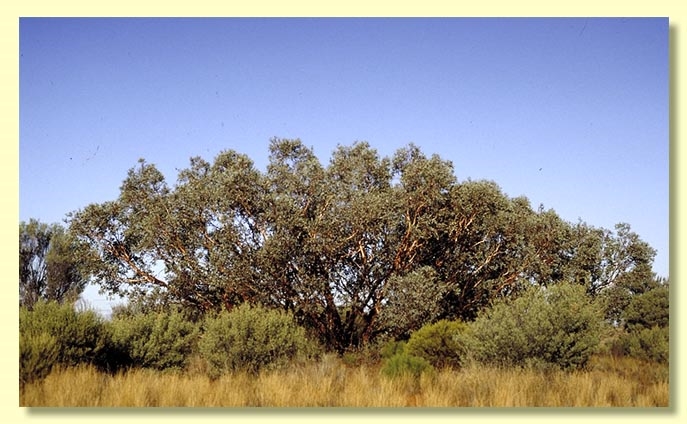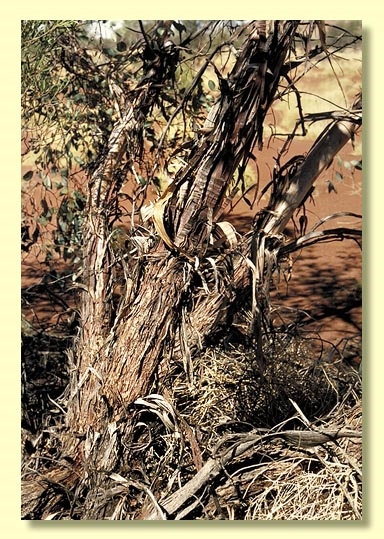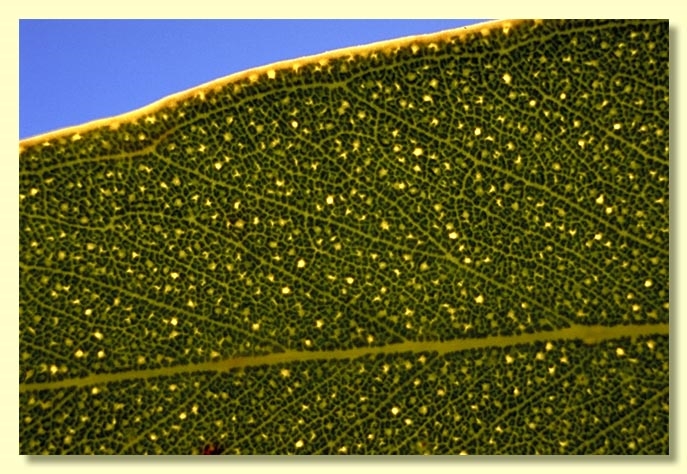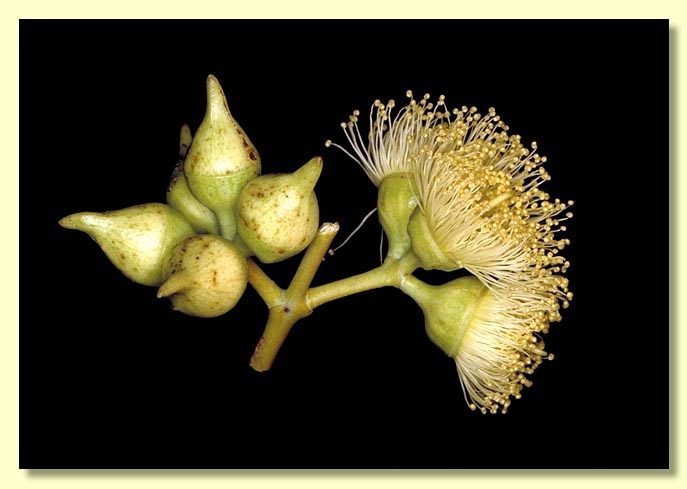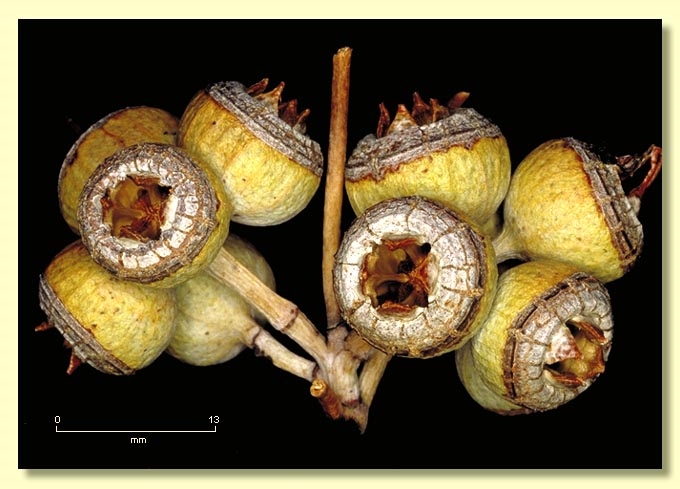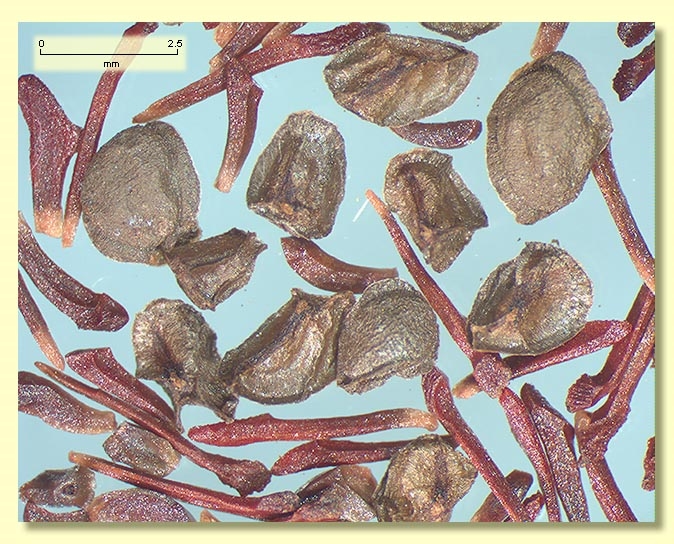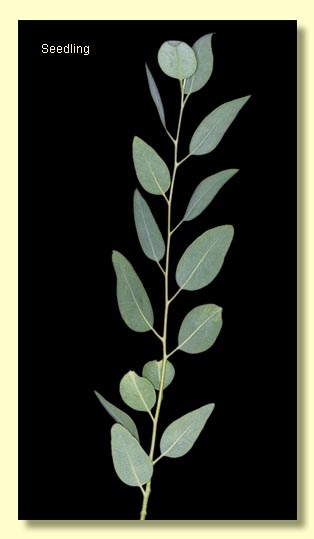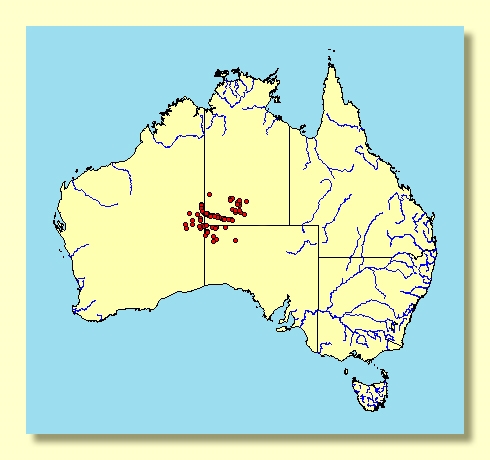Euclid - Online edition
Eucalyptus oxymitra
Eucalyptus | Symphyomyrtus | Bisectae | Destitutae | Curviptera | Xylocarpae
T: Missionary Plain by Pine Point, N.T., 1894, R. Tate s.n.; syn: AD, NSW; near junction of Palmer & Walker Rivers, N.T., 1894, R. Tate s.n.; syn: NSW42356.
Bark of trunks more or less rough with grey-brown imperfectly decorticated ribbons, smooth grey and creamy above.
Branchlets glaucous or non-glaucous; lacking oil glands in the pith.
Juvenile growth (coppice or field seedlings to 50 cm): stems rounded in cross-section; juvenile alternate leaves ovate, 4–11 cm long, 2.5–4.5 cm wide, grey-blue.
Adult leaves alternate, petioles 1.2–2.8 cm long; blade lanceolate to ovate, (4.8)5.5–12.5 cm long, 1.5–4 cm wide, base tapering to petiole, concolorous, dull, grey-green to bluish grey or sometimes light yellowish green, side-veins greater than 45° to midrib, reticulation dense, intramarginal vein close to margin, oil glands few and intersectional.
Inflorescence axillary unbranched, peduncles 0.7–1.5 cm long, buds 7, normally pedicellate, rarely sessile, pedicels (0)0.2–0.7 cm long. Mature buds ovoid (1.1–1.6 cm long, 0.6–1.3 cm wide), usually glaucous, scar present, operculum prominently beaked or sometimes long-conical (0.7–1.1 cm long), stamens erect to oblique with some inner inflexed, anthers globoid-oblong, versatile, basifixed, dehiscing by lateral slits, style long, stigma blunt, locules (3)4 or 5, the placentae each with 6 vertical ovule rows. Flowers white to pale yellow.
Fruit sessile or pedicellate, pedicels 0–0.7 cm long, shallowly hemispherical to truncate-globose, 0.5–1.2 cm long, 1–2.1 cm wide, scarcely ridged, disc raised, valves (3)4 or 5, exserted and often surmounted by short sharp style remnants.
Seeds fawn to greyish brown, 2–4 mm long, obliquely pyramidal, the dorsal surface smooth to shallowly reticulate, the sides ridged, with a prominent or narrow marginal flange, hilum terminal.
Cultivated seedlings (measured at node 10): cotyledons Y-shaped (bisected); stems rounded in cross-section; leaves always petiolate, opposite for 3–9 nodes, ovate, 4–7.5 cm long, 2.5–4 cm wide, dull, green to grey-green.
Flowering has been recorded in January, April, July, October and December.
A mallee of remote areas in central Australia, from south-west of Warburton, Western Australia, north-east to the Rawlinson Ranges, the south-western Northern Territory east to the MacDonnell Ranges, and south to the Everard Ranges, South Australia; on sandplains and dunes, and also on rocky slopes. Bark rough on lower trunk otherwise smooth, branchlets and buds usually glaucous, leaves grey-blue to pale yellow green.
Eucalyptus oxymitra belongs in Eucalyptus subgenus Symphyomyrtus section Bisectae subsection Destitutae because buds have two opercula, cotyledons are Y-shaped and branchlets lack oil glands in the pith. Within this subsection E. oxymitra is in series Curviptera, one of about 30 closely related species and subspecies which are further characterised by having large buds in umbels of one, three or seven, staminal filaments erect or oblique (rarely inflexed) in bud, and large fruit usually with an ascending disc and exserted valves.
E. oxymitra is distinguished in series Curviptera by the combination of ovate adult leaves, buds in sevens, the beaked opercula and usually glaucous buds. Its buds and fruit lack the prominent ribs or wings that are a feature of related arid zone species E. sessilis, E. pachyphylla, E. kingsmillii and E. youngiana. The related dune-dwelling shrub-mallee species E. rameliana (mostly single-budded) has larger, ribless buds when compared to E. oxymitra and is never glaucous. E. rameliana is found only in the Pilbara region, and E. sessilis and E. pachyphylla are restricted to central Australia.

